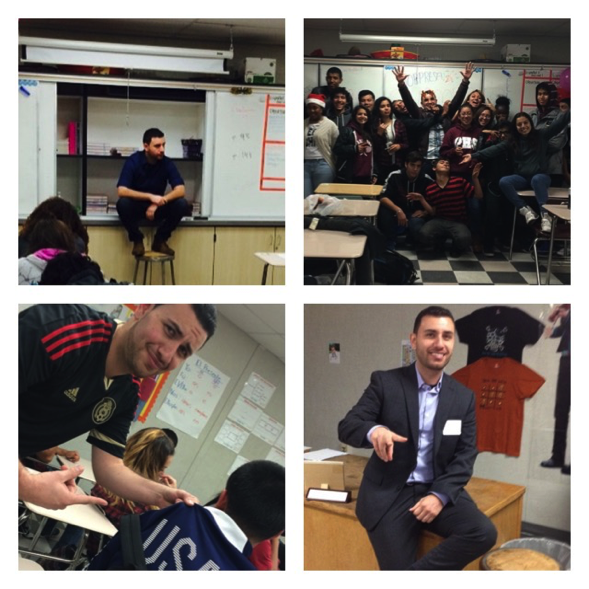As I become more aware of my surroundings, and myself, it becomes clear that a uniform way of behaving does not exist between teachers. Yes, there some common grounds within a school to try and create a specific culture, but even those common grounds are personalized. So my question becomes one that has been asked more and more frequently as we witness the evolution in the new generation of students: how can we, as teachers, best connect with the students of today to create more receptive students in the school as a whole?
I have a couple theories to this question, but first let’s examine the more traditional approach taken by some of the more seasoned teachers. As I was going through my teacher training, I was advised by some to not smile until December of the school year. I was supposed to maintain a strict personality to gain the respect of the students as well as the control of my classroom. My first thought to this statement was “hmmm that sounds nothing like me”. To not smile for months was not something I was ready to embrace for a few reasons. First of all, the couple of teachers that didn’t smile when I was in high school were, let’s just say, not as respected by the student body as those who smiled. Secondly, there have been numerous studies done at universities with definite evidence which concludes that smiling, even a forced smile, can drastically improve your state of being throughout the day by lowering your cortisol levels. I won’t get much more into the science of this because it would turn into a scientific journal, but I prefer to be happy and smiling as opposed to not smiling and potentially less happy, which may affect my performance.
This brings me to the other kind of teacher, which is the “always super nice and accommodating” teacher. This can be a very dangerous and slippery slope if not measured as we go through the years as educators. In my experience, I have also encountered my fair share of educators who are too nice. This turns them into the “pushover educators,” which students smell immediately and realize that they can get away with much more than usual. To an extent, this can be a disservice to the students because the lack of accountability and structure will eradicate any responsibility they had in that classroom (for most students), and performance will drop.
Finding a middle ground is one of the most difficult challenges in the world of education for class management in the K-12 setting. Some educators never reach this because they either fall too far on one side or too far right on the “nice” scale. I cannot say that one method outperforms the other, but I can tell you that the blend of both can lead to a stress free environment for both educators and students. I am personally still striving to reach this unicornian blend of classroom personality, but I have found that being open with the students and allowing them to get to know who I am as a person allows for that bond to be built between humans. If such bond is created, the students’ receptiveness to the educator immensely increases. Since my goal is to enlighten these students as much as possible, I need them to be open to my words and that cannot happen if I don’t have their respect and attention, which can most of the time be gained with a simple smile. As of now the conclusion to this question will be open, but I will come back to this topic and update you with both good and bad experiences from the different methods of interacting with the students. Until then, let’s try to keep our cortisol levels down.
Isaac Alvarado
Latest posts by Isaac Alvarado (see all)
- Sección de Maestros: La Batalla Entre Ser Amable y Estricto en el Aula - June 9, 2017
- Teacher’s Corner: The Battle Between Being Nice and Strict in the Classroom - June 8, 2017
- ¿Quieres Ayudar a Construir la Resiliencia en Nuestros Estudiantes? Comencemos por Incluir Los - February 16, 2017
- Want to Help Build Resilience in Our Students? Start by Engaging Them - February 16, 2017

